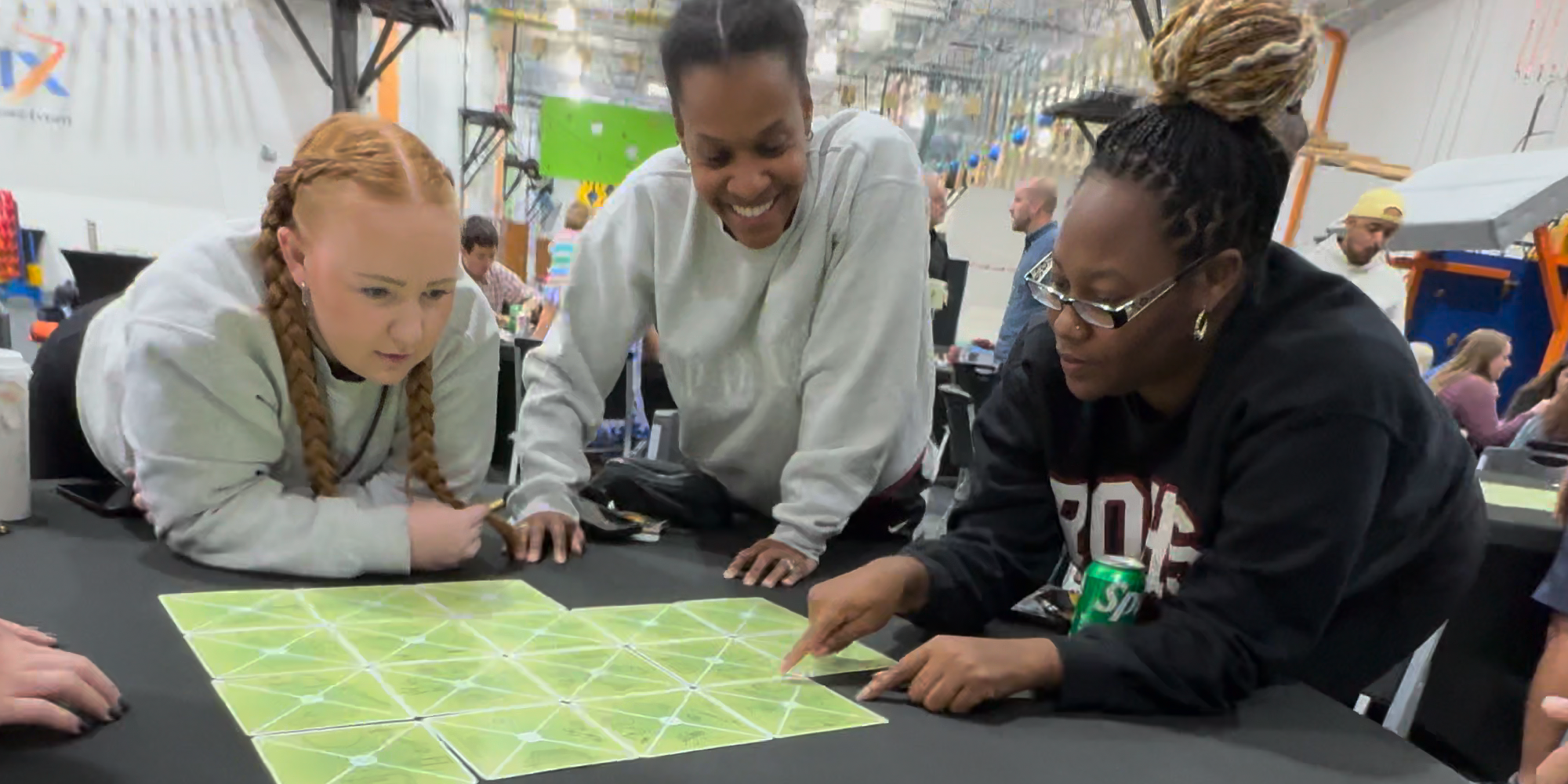The presumptive setting for most team building activities or programs is a group of 12 to 15 people (on average.) So, for many group facilitators, smaller groups of participants will stretch their activity repertoire. This article is all about small group team building activities that work because I have presented them many times all over the world and people love them.
What Makes Small Groups Special?
Other than the obvious difference (the number of participants,) there are a number of distinguishing features that make small groups unique.
But first, let’s define a ‘small’ group as less than ten people, and more likely any number between three and six. Every one of the activities I describe later in this article work with groups this size.
Intimacy
With fewer people, you can devote a great deal more time to each person in the group which can make everyone feel more valued and meaningfully connected to others. This sense of belonging can propel a group faster and further ahead than what is ordinarily possible with much larger groups.
Contribution
Smaller groups mean fewer people need to be engaged or consulted to make decisions. It’s difficult to hide in a small group, so each person is more willing and able to make a contribution. For example, more ideas can be developed during the ideation stage rather than relying on the loudest voice. To this end, your efforts to create a safe and positive learning environment is critical to ensure everyone feels valued.
Resources
Naturally, fewer people means fewer resources and smaller spaces are required to run small group team building activities. If, in fact, you need any resources (some of my favourites discussed below do not,) you can expect leaner budgets and less storage, too. Also, one facilitator is typically adequate in terms of group/instructor ratios for many team building activities.
Yes, it’s true that while small groups lack the energy generated by a large group, what they lack in energy they make up for in depth. Personally, I love working with smaller groups because the program feels more like a conversation with friends rather than a lecture in an auditorium.
Fun Small Group Team Building Activities
The following small group problem-solving activities are just a sample of what you can discover in playmeo’s online activity database. If your team loves puzzles, then check out our article about team building puzzle activities for more ideas. You can never have too many small group team building activities that work.
1. River Crossing
This simple, but no easy lateral-thinking puzzle is ideal for small groups. Perfect for indoors as much as outdoors, and if necessary, you can involve a couple of simple (yet optional) props to illustrate the challenge. There’s only one answer. Be prepared to reflect on topics such as critical thinking, leadership and problem-solving.
2. Climer Cards
This versatile set of cards are perfect for many small group team building activities because you can use them to reflect before, during or after any other team experience. The hand-drawn images will evoke many thoughts and ideas and when facilitated in a carefully sequenced program, you can expect them to become one of your favourite debriefing tools to explore many team development themes such as perspective, leadership and trust.
3. Leaning Tower of Feetza
You can easily adapt this rapid group initiative (which normally benefits from lots of people) by simply adding more shoes. Your group’s task is to build the tallest tower of shoes in three minutes, but it’s not as easy as it sounds. In a large group context, too many cooks may spoil the broth, so this exercise is perfect for small groups. Upon completion, judge the winner and then invite your group to reflect on what worked and what didn’t in terms of their team process.
4. Pretty Darn Quick
Admittedly, this is a very energetic activity, so choose your audience and sequence carefully, but for the right group, I guarantee they will want to play this game over and over again. All you need is an open space in which your group can move and jump around safely. It may take a minute or two to digest the rules, but once play starts, you can expect everyone to pick up what’s going on very quickly.
5. As If…
Think of this wonderful partner activity as an opportunity to know what it’s like to live in someone else’s shoes. The step-by-step instructions provide ample scenarios to get you started, and then you can open up to your group for more ideas. If your small group is an odd number, then jump in to complete the final pair.
6. Longest Shadow
A classic in the making. All you need is a wide-open space outside and a bright, sunny day. My suggestion with a small group is to keep them all in the same team, but challenge them over the course of several short 2-minute rounds. Invariably, your group will surprise themselves with what is possible once they start to think creatively.
7. Lean Walk
Another powerful partner activity that teachers trust, communication and problem-solving skills. Be sure to view the video tutorial – it’s all you’ll need to present this exercise with ease.
Finally, I should mention that card games, or any activity that involves cards of some sort, are perfect for small groups. Indeed, you can refine your search for team building card games by adding the words “playing cards” to your activity search within our online database.

No Props? No Problem!
Get 150+ no-prop games & activities + exclusive 30-day free trial of playmeo. Scan QR codes to view activity videos, leadership tips, etc.

EMOJI Feeling Cards
50+ cards that portray a range of emotions from happy, sad, angry & confused. Ideal for building emotional literacy skills.

Wow, you’ve been busy!
You can open 1 more
activity for free.
Limit resets every 24 hours
or click below to get unlimited access.











Original post June 2020, last updated October 2024.